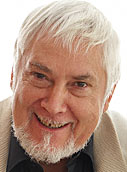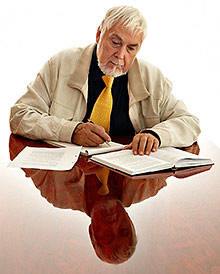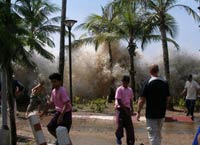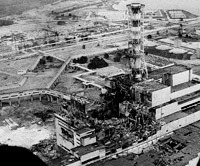


Offer
Bruno Umiker is a pioneer of the Total Risk theory that handles the system holistically, i.e. reduces both technical as well as human risks. It is found again and again that in the developed world huge sums are being spent for the reduction of technical risks, while the human risk factor is almost completely neglected. Sometimes it seems to the outsider as if the entire workforce were willfully determined to bypass the technical security and safety measures [see Tschernobyl or American Airlines DC10].
Total Risk = Technical Risk + People Risk
The Walter Umiker + Co. AG specializes in total risk management. In addition to the technical risk assessment the human factor is always built into the overall solution. The analysis includes the organizational environment and the corporate culture, which determine the behavior of the workforce significantly. Experience shows that with a fraction of the cost of technological risk reduction, the overall risk can be improved by orders of magnitude. The Total Risk Management Process of the Walter Umiker + Co. AG has the following four phases:
- Phase 1: Analysis of technical, organizational and human risks, holistic use of Umiker's System of Total Risk Management.
- Phase 2: Creating the basic risk management concepts in cooperation with the responsible decision makers.
- Phase 3: Communication of the risk management concepts to employees and follow-up training in courses and seminars
- Phase 4: Longterm monitoring and Coaching of individuals and workgroups. Follow-up courses on the customer's premises.
The services offered by Walter Umiker+Co. AG are:
Risk-Management
- Total Risk assesments
- Assesment of Product-Reliability Risks
- Communication Culture and Risk Awareness Development
- Insurance Strategy Assessment
- General Security and Safety Concept Development
- Alarm and Evacuation Planning
- Emergency and Disaster Planning
- IT Security Concept Development
Organization Psychology
- Corporate Culture Development
- Development of the Organizational Structure of Enterprises
- Communication Training
- Conflict Management
- Coaching and Team-Supervision
Examples of Course Modules offered by Walter Umiker+Co. AG
Details of the concepts, learning objectives, agendas and duration of the course modules can be found in the following downloads:
- Risk Management Seminar
- Conflict Management Seminar
- Communication Training
- Corporate Culture Seminar
- Rethorical Skills and Presentation Seminar
Who are we?
A team of qualified professionals under the direction of Bruno Umiker with access to a network of generalists and specialists from various disciplines such as Physics, Electrical Engineering, Civil Engineering, Organizational Theory, Psychology and Pedagogy.[top]
Bruno Umiker
 Bruno Umiker was born in Switzerland where he studied Electrical Engineering at the Swiss Federal Institute of Technology (ETH). After graduation with a Master of Science degree, Bruno Umiker joined IBM where he served as a Systems Engineer followed by the position of a Key Account Manager with Intel Corporation. He gained first experience in his current specialty at Oerlikon-Bührle where he served as corporate Risk Manager.
Bruno Umiker was born in Switzerland where he studied Electrical Engineering at the Swiss Federal Institute of Technology (ETH). After graduation with a Master of Science degree, Bruno Umiker joined IBM where he served as a Systems Engineer followed by the position of a Key Account Manager with Intel Corporation. He gained first experience in his current specialty at Oerlikon-Bührle where he served as corporate Risk Manager.
Early on, Bruno Umiker recognized the importance of the human factor in the discipline of Risk Management. He began a second education in Psychology at the University of Zürich which he completed with the degree lic. phil. (Master of Phylosophy). He continued the study of psychology at the "Gesellschaft für Wissenschaftliche Gesprächstherapie" (Society for Client-Centered Therapy), Cologne where he graduated with the Certificate of Client-Centered Psychotherapy.
There followed further studies with the internationally acclaimed conflict manager Marshall Rosenberg in Nonviolent Communication.
Bruno Umiker is owner of the Walter Umiker+Co. AG. He consults major international organizations in Risk and Conflict Management, using his Total Risk Management approach. Bruno Umiker coaches executives and offers psychotherapeutic services for individuals and groups.
Bruno Umiker is a lecturer at the Centre for Risk Management, at the Zurich College of Applied Sciences, and at the Management College, Lucerne. He is a member of the Morphological Society and of the "Gesellschaft für Wissenschaftliche Gesprächstherapie", Cologne. [top]
Contact
- e-Mail: bruno.umiker @ wuco.ch
- +41 44 381 38 00 (Fixed net)
- +41 79 418 41 90 (Handphone)
- Forchstrasse 301
CH-8032 Zürich
Schweiz
[top]
Partners
- Martin Reiser, Dipl. El. Ing. ETH, Professor, Dr. Dr. h.c., Media Management, IT management
- Paul A. Truttmann, Dr. sc. nat., dipl. Phys. ETH, lic. phil., Coaching of corporate reorganization processes
- Peter Hochmann, lic. oec. HSG, Restructuring of Enterprises
- Peter Bisang, dipl. El. Ing. ETH, Morphologe MIZ, Risk Manager
- Fritz G. Müller, Dipl. Ing. ETH, M.Sc.
- Peter Schweizer, Dipl. El. Ing. ETH, Innovation Management
[top]
Selected References
- Ascom AG, Bern
- Fraunhofer Gesellschaft, Sankt Augustin, Deutschland
- Credit Suisse, Zürich
- Swisscom Mobile AG, Bern
- Zweifel Pommy-Chips AG, Spreitenbach
- Feldschlösschen Getränke AG
- Obwaldner Elektrizitätswerke, Kerns
- Aargauische Elektrizitätswerke, Aarau
- Cilag AG, Schaffhausen
- Frako AG, Emmendingen, Deutschland
- RUAG Electronics, Bern
- Stresemann Institut, Bonn, Deutschland
- Ferrero OHGmbH, Frankfurt, Deutschland
- Tecan AG, Männedorf
[top]
Man is the Risk
There are countless examples where humans were the main risk factor. We give three prominent examples. In each of these case studies, if the workforce or management had been properly trained on risk identification and risk prevention, billions of dollars in damage could have been avoided.
![]() Tsunami
Tsunami

Even though tsunamis were known to have occurred in the region of the bay of Bengal, the alarm organization was not adequate.
Even worse, alarm coming from the tsunami warning system Hawaii was not passed on due to fears of ailenating the tourists[Wikipedia] [top]
Costs: billions of $, Casualties: over 200'000. Thousands could have been saved had a warnig been given. The image of Thailand damaged.
 American Airlines Flight 191 was a regularly scheduled passenger flight from O'Hare International Airport in Chicago, Illinois, to Los Angeles International Airport. On May 25, 1979, the McDonnell Douglas DC-10-10 operating the flight crashed moments after takeoff from Chicago. All 258 passengers and 13 crew on board were killed, along with two people on the ground as the airliner fell into a trailer park.
American Airlines Flight 191 was a regularly scheduled passenger flight from O'Hare International Airport in Chicago, Illinois, to Los Angeles International Airport. On May 25, 1979, the McDonnell Douglas DC-10-10 operating the flight crashed moments after takeoff from Chicago. All 258 passengers and 13 crew on board were killed, along with two people on the ground as the airliner fell into a trailer park.
Investigators looked at the plane's maintenance history and found that its most recent service was eight weeks before the crash, in which engine number one had been removed from the aircraft. The pylon, the rigging holding the engine onto the wing, had been damaged during the procedure. The procedure recommended by McDonnell Douglas called for the engine to be removed from the pylon prior to detaching the pylon itself, but American Airlines, along with Continental Airlines and United Airlines, had begun to use a procedure that saved approximately 200 man-hours per aircraft. The new procedure involved mechanics removing the engine with the pylon and engine as a single unit. A large forklift was used to support the engine while it was being detached from the wing – a procedure that was found to be extremely difficult to execute successfully, due to difficulties with holding the engine assembly straight while it was being removed.
The field service representative from McDonnell Douglas said the company would "not encourage this procedure due to the element of risk" and had so advised American Airlines. However, McDonnell Douglas "does not have the authority to either approve or disapprove the maintenance procedures of its customers."
Under the procedure American used, if the forklift was in the wrong position, the engine would rock like a see-saw and jam against the pylon attachment points. The forklift operator was guided by hand and voice signals; the positioning had to be perfect or damage could result.
The damage was not enough to cause an immediate failure; a fatigue crack developed and got worse with each flight. During flight 191's takeoff, the damaged rear pylon mount finally reached the breaking point and failed.
On June 6, 1979, two weeks after the accident, the Federal Aviation Administration suspended the type certificate for the DC-10, thereby grounding all examples of the jet under its jurisdiction. Additionally a special air regulation was enacted prohibiting the DC-10 from operating within U.S. airspace, which prevented foreign DC-10s not under the jurisdiction of the FAA from flying within the country[Wikipedia]
The international airtraffic was grossly impaired for weeks and McDonald-Douglas stopped manufacturing the plane [top]
Costs: more than 500 Millionen $, Casualties more than 200; DC 10 und McDonald-Douglas severely compromised
 On April 26, 1986, a major accident occurred at Unit 4 of the nuclear power station at Chernobyl, Ukraine, in the former USSR.
On April 26, 1986, a major accident occurred at Unit 4 of the nuclear power station at Chernobyl, Ukraine, in the former USSR.
The operating crew was planning to test whether the turbines could produce sufficient energy to keep the coolant pumps running in the event of a loss of power until the emergency diesel generator was activated.
To prevent any interruptions to the power of the reactor, the safety systems were deliberately switched off. To conduct the test, the reactor had to be powered down to 25 percent of its capacity. This procedure did not go according to plan and the reactor power level fell to less than 1 percent. The power therefore had to be slowly increased. But 30 seconds after the start of the test, there was an unexpected power surge. The reactor's emergency shutdown (which should have halted a chain reaction) failed.
The reactor's fuel elements ruptured and there was a violent explosion. The 1000-tonne sealing cap on the reactor building was blown off. At temperatures of over 2000°C, the fuel rods melted. The graphite covering of the reactor then ignited. The graphite burned for nine days, churning huge quantities of radiation into the environment. The accident released more radiation than the Hiroshima bomb.
Initial attempts to extinguish the burning reactor involved fire fighters pouring cooling water into the reactor, and were abandoned after 10 hours. From 27 April to 5 May, more than 30 military helicopters flew over the burning reactor. They dropped 2400 tonnes of lead and 1800 tonnes of sand to try to smother the fire and absorb the radiation.
These efforts were also unsuccessful. In fact they made the situation worse: heat accumulated beneath the dumped materials. The temperature in the reactor rose again, along with the quantity of radiation emerging from it. In the final phase of fire fighting, the core of the reactor was cooled with nitrogen. Not until 6 May were the fire and the radioactive emissions under control.
Despite the obvious dangers the response to the disaster needed people. Not just a few but thousands of people whose lives and health were sacrificed in vain attempts to contain the disaster. These people were termed 'liquidators'.
The 600 men of the plant's fire service and the operating crew were themost severely irradiated group. In this group 130 men were irradiated with doses equivalent to 650 years worth of a radiation worker's annual limit. Thousands of military personal and other workers were drafted in to move deadly radioactive material with little or no protection.
31 workers died shortly afterwards. A total of between 600,000 and 800,000 men were involved in the clean-up operations in Chernobyl up to 1989. Of these men, 300,000 received radiation doses 500 times the limit for the public over one year. Today, the ones who still survive are still suffering from the damage to their health.
How many of them have died to date from the disaster is a controversial question. According to government agencies in the three former Soviet States affected, about 25,000 "liquidators" have so far died. Estimates provided by the liquidator associations in the three countries are well in excess of the official figures. The Chernobyl Forum's 2005 Report, on the other hand, attributes a far lower number of liquidator deaths to the reactor disaster.
These discrepancies in numbers are due to different methods of assessment. Also the liquidator statistics (number of casualties and amount of radiation received) were distorted by the Soviet authorities so definitive numbers may never be known.
[Greenpeace] [top]
costs: several hundert billion $, Casualties more than 2000; atomic energy compromised permanently
Literature
Bruno Umiker, Der Coconut-Effekt, Vortrag an der ETH, ASIS, 4. Juni 1997
Bruno Umiker, L'effet de la noix de coco, Vortrag an der ETH, ASIS, 4. Juni 1997
Bruno Umiker, The Coconut Effect, presentation ETH, ASIS, June 4, 1997
Bruno Umiker und A. Peer, Kommunikationssicherheit in der Sicherheitskommunikation, in iomanagement, Nr. 11, 1999
Bruno Umiker und H. Kuhn, Risiken fordern das Management heraus... in iomanagement, Nr. 6, 2000
Bruno Umiker, Die psychologischen und kommunikativen Aspekte des Risk Managements, in Bulletin SEV/VSE 23, 2001
Bruno Umiker, Hat Freud das Unter-Ich vergessen? in Bulletin ASE/AES 23, 2001
Bruno Umiker, Révolution en douceur dans l'entreprise, in Bulletin SEV/VSE 83, Jan. 1992
Bruno Umiker, Emotionen – labyrinthischer Faktor in Sicherheitsforum 6, 2004
Bruno Umiker, Emotionen – Der labyrinthische Faktor im Risk Management. Oder: Warum gab man in Thailand keinen Tsunami-Alarm? in Organ der Gesellschaft für wissenschaftliche Gesprächstherapie e.V., 30. Jahrgang, Dez. 2005
Bruno Umiker und P. A. Truttmann, Deregulierung! Agieren und oder Reagieren in Bulletin SEV/VSE, 18/96
Bruno Umiker, The Modern Art of a Dialogue on Environmental Risk, SRA-Europe 4th Conference on Safety Analysis and Risk Management, Rome, 1993
Bruno Umiker, Alfred Peer und Paul A. Truttmann, Warum braucht jedes Unternehmen ein Informatik-Notfallkonzept?, io Mangement Zeitschrift, vol. 64, Nr. 11, 1995, Verlag Industrielle Organisation BWI ETH, Zürichbergstrasse 18, CH-8028 Zürich
Bruno Umiker und Paul A. Truttmann, Gemeinsam die Zukunft vorwegnehmen!, io Mangement Zeitschrift, vol. 65, Nr. 4, 1996, Verlag Industrielle Organisation BWI ETH, Zürichbergstrasse 18, CH-8028 Zürich
Bruno Umiker und Peter Schweizer, Innovation und ihre Widerstände, Vortrag Nationaler Baukongress, Zürich, 13. Nov. 2008
Bruno Umiker und Peter Schweizer, Innovation and Resistance to It, presentation National Baukongress, Zürich, Nov. 13, 2008
Bruno Umiker und Peter Schweizer, Innovation – wer will sie wirklich? Risikobetrachtungen über Chancen und Gefahren, Baublatt, Nr. 49, 5. Dezember 2008, Seiten 32-36, Docu Media Schweiz GmbH
Bruno Umiker und Peter Schweizer, Der PIAP steigert die Akzeptanz von TRIZ, Vortrag an der Fachhochschule Luzern, 16. Juni 2009
Bruno Umiker und Peter Schweizer, Krisenbewältigung durch Innovation? Bau & Architektur Nr. 4, STV-Verlags AG CH-8023 Zürich, 2009
Bruno Umiker, Risk Management, Risikofaktor Mensch, Vortrag am OP-Risk Forum der COMIT Zürich, 4. Juni 2009
Peter Schweizer und Bruno Umiker, Unangenehme Entscheidungen und wie man sie sinnvoll treffen kann, Schweizer Arbeitgeber, vol. 23, Dezember 2009
[top]
.......................................................................................................................................
Concept and Webdesign © Martin Reiser